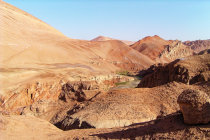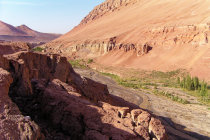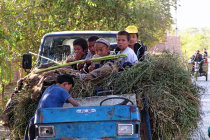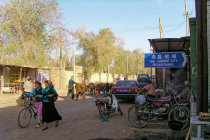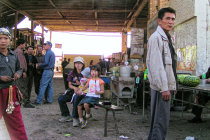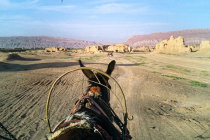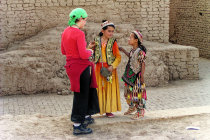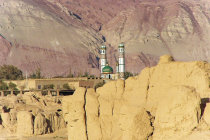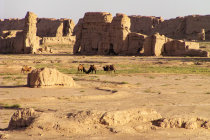The oasis city of Gaochang was built as a garrison and trading post when the Han Dynasty opened up the Silk Road in the first century
BC. Over time the city grew in importance and once was the capital of the Uyghur Kingdom.
The Chinese citizens of Gaochang were buried
at the nearby Astana Tombs.
The coffins were stuffed with products for afterlife, made from used papers, that give us a nice insight
of the daily life in those days.
Invading Mongols destroyed Gaochang in the 14th century and after the Silk Road closed, the place
was abandoned and the buildings were used as fertilizer by the local farmers.
Just north of the ruins rise the reddish Flaming Mountains,
the hottest spot in China. At Mutou Valley, a deep gorge runs through these mountains. Here you find the Bezeklik
Thousand Buddhas Cave that feature Buddhist paintings and murals dating back to the 10th century.
Unfortunately, over time most murals
were badly damaged by Muslim zealots and later by fanatic Red Guards during the Cultural Revolution.
We visited Gaochang in
October 2003.





